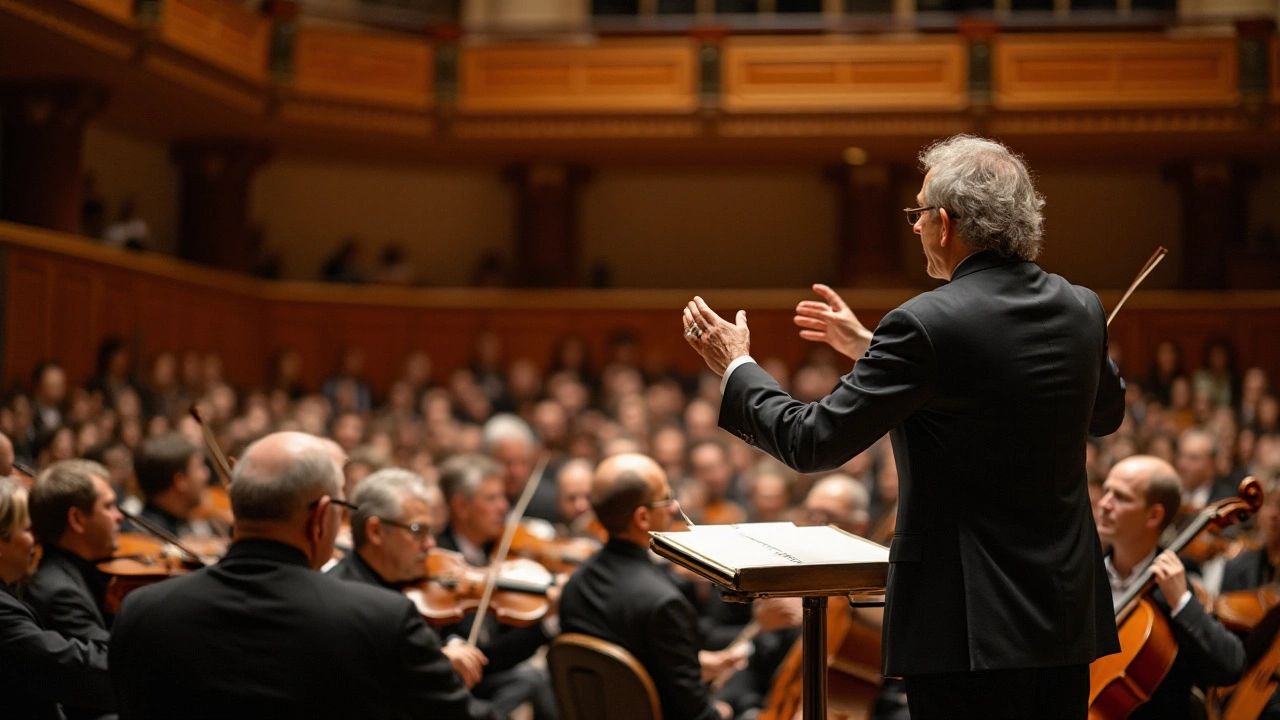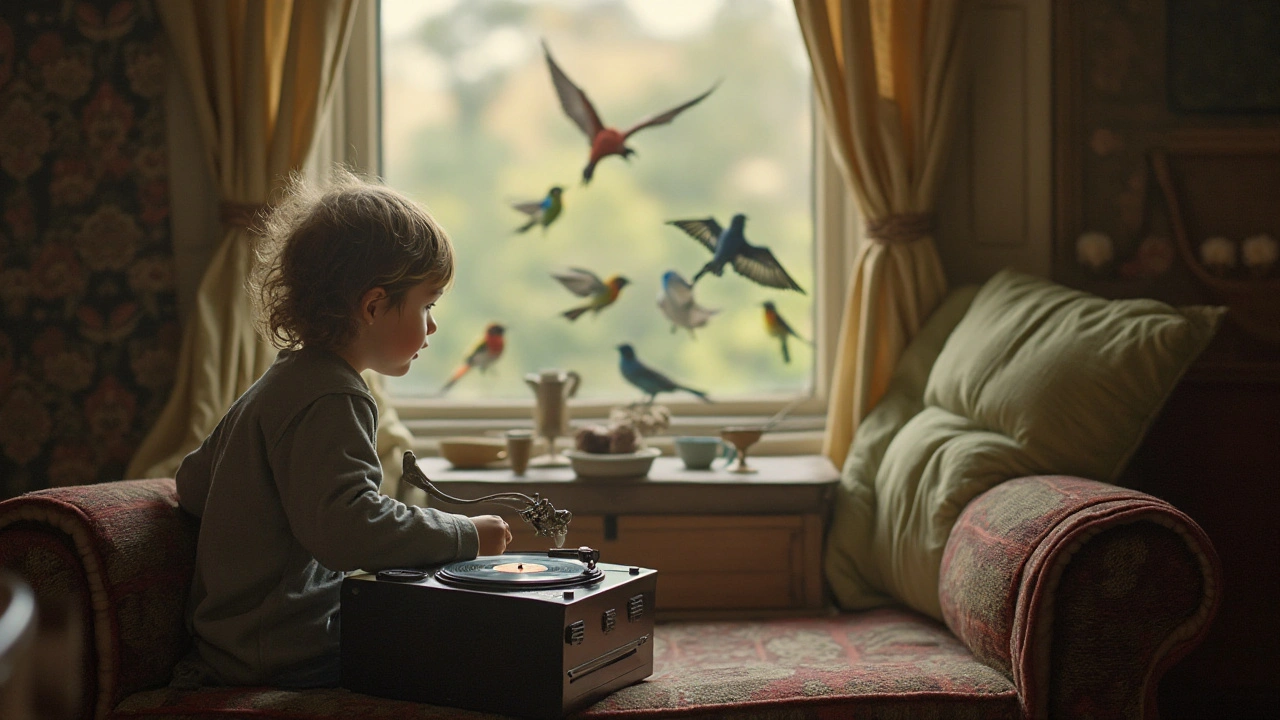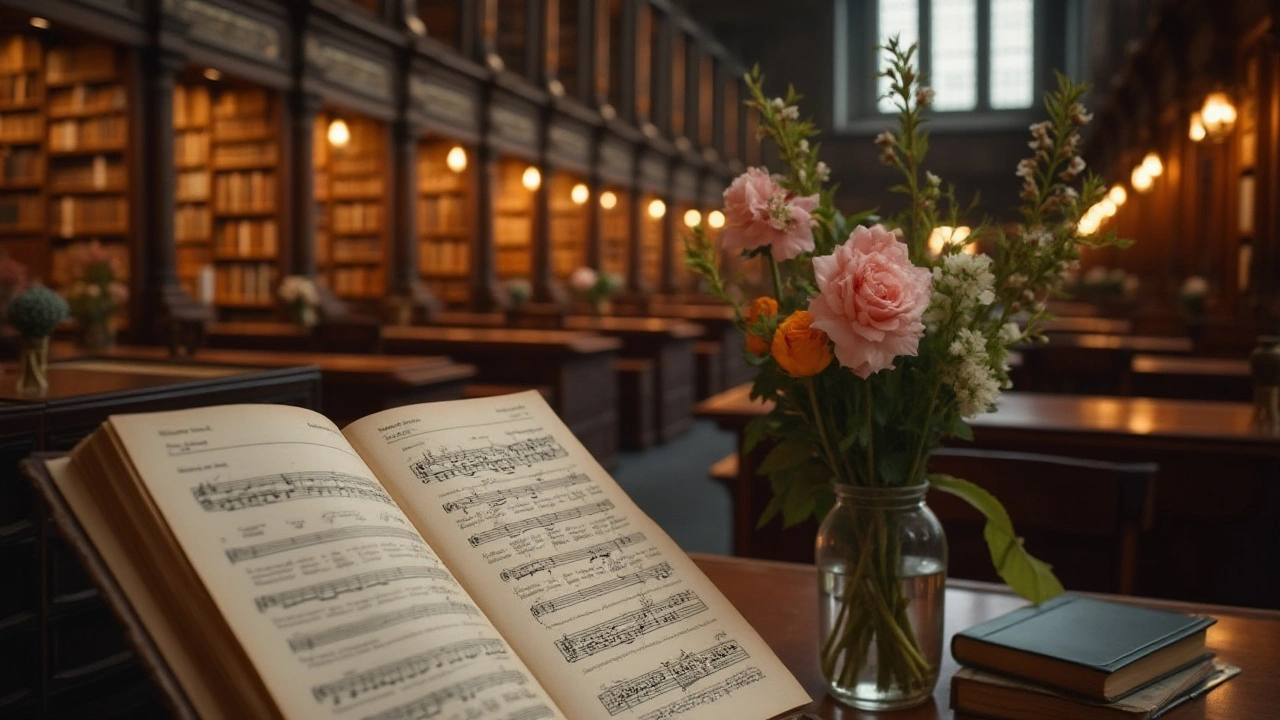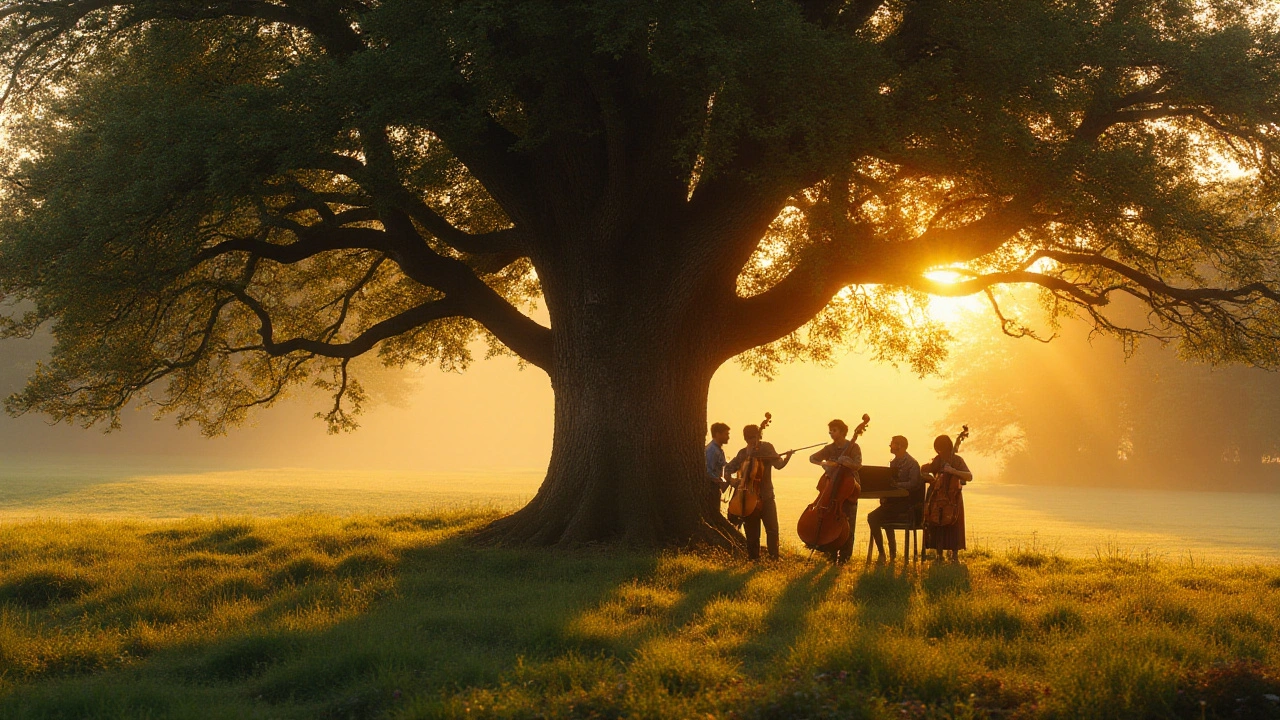Classical music, with its rich history and complex arrangements, holds a unique power to shape our perception of beauty. The relationship between sound and aesthetics has intrigued thinkers and artists for centuries, offering profound insights into how our senses interact with the emotional and intellectual aspects of music.
This article delves into how the melodies and harmonies crafted by master composers influence our understanding of what is beautiful. From the grandeur of Beethoven's symphonies to the delicate nuances of Mozart's concertos, we explore how classical music impacts our appreciation of aesthetic elements in art, nature, and even in everyday life.
By examining scientific research alongside historical contexts, we uncover the fundamental ways music enhances beauty perception. Expect to find inspiration and practical advice on how incorporating classical music into your routine might not only refine your taste but also enrich your experience of the world.
- The Historical Connection Between Music and Beauty
- The Science Behind Music and Perception
- Classical Composers and Their Influence on Aesthetic Awareness
- Practical Tips for Integrating Classical Music into Daily Life
The Historical Connection Between Music and Beauty
Throughout history, classical music has been woven intricately into the fabric of what society deems beautiful. From the Baroque era to the blooming of Romanticism, music has played a pivotal role in shaping aesthetics. In ancient Greece, philosophers such as Plato and Aristotle believed that music was essential for education as it cultivated harmony in the soul akin to its structural beauty in sound. They saw it as an intelligent force that mirrored the universe's order and thus, reflected true beauty.
During the Renaissance, the connection between music and beauty gained further strength. Music became a reflection of divine order, with composers like Palestrina crafting exquisite polyphonic works that many viewed as the aural equivalent of the period's stunning visual art. This era elevated music to new heights, entwining it with the ideals of symmetry, balance, and proportion, both in art and architecture.
Moving forward to the Classical period, music by composers such as Mozart and Haydn embodied clarity and elegance, further reinforcing the connection between music and beauty. Their compositions mirrored the era's aesthetic sentiments, focusing on structured forms and expressive beauty that resonated with audiences worldwide. Interestingly, the beauty perception of this music was not just in the notes themselves but how they were performed and heard in the lavish concert halls of the time.
Classical music's influence on the perception of beauty continued into the 19th century with the Romantic composers, who sought to express raw emotion and individualism through their music, thus expanding the concept of beauty to include the emotional sublime. Composers like Chopin and Wagner emphasized lush orchestration and thematic transformation, drawing listeners into an inner world where beauty was both felt and heard. As the Romantic ideal spread, music's power to convey deeper beauty became even more profound.
"Music is the shorthand of emotion." — Leo Tolstoy
In today's world, classical music still holds an esteemed position in how we perceive beauty, influencing everything from film scores to contemporary art installations. Its timeless qualities remind us that while trends may change, the essence of beauty is steeped in harmony and balance. This enduring legacy showcases how classical music has not only shaped beauty standards in its own time but continues to influence contemporary understandings of what is aesthetically pleasing. As we delve deeper into music history, it becomes evident how deeply interconnected the worlds of sound and sight truly are.

The Science Behind Music and Perception
Exploring the science behind how music influences our perception of beauty reveals a fascinating intersection of psychology, neuroscience, and culture. Our brains process music in complex ways, engaging regions responsible for emotion, memory, and even motor control. This intricate interplay can significantly alter how we perceive beauty in the world around us. When we listen to classical music, our brains respond by releasing dopamine, a neurotransmitter associated with pleasure and reward. This chemical reaction often leads to feelings of happiness and a more profound connection with aesthetically pleasing experiences.
Research conducted by neuroscientists has demonstrated that music, especially the melodious and harmonious structures found in classical compositions, can enhance our emotional responses to visual stimuli. A study by the University of London found that participants who listened to music experienced enhanced perceptions of beauty when looking at art, compared to those who observed art in silence. The researchers suggest that music boosts the viewer's emotional arousal, thus enhancing the aesthetic experience. Moreover, classical music's complexity can stimulate the brain, encouraging a more profound appreciation for balance and symmetry, both essential aspects of what many regard as beautiful.
"Music can change the way you think and feel," explained Dr. Daniel Levitin, a renowned neuroscientist and author of several books on the impact of music on the brain. "It helps us to see the world through a new lens and appreciate aspects of beauty we might have otherwise overlooked."
It's also essential to consider how musical tempo and dynamics influence our perceptions. Slow, soothing symphonies may encourage reflective contemplation, allowing listeners to perceive beauty in subtle details. Conversely, pieces with brisk tempos and lively crescendos can invigorate the senses, highlighting visual elements that might otherwise go unnoticed. Indeed, the effect of music influence on perception can vary greatly depending on the individual's personal experiences, cultural background, and even the specific piece of music being played.
Music's influence on perception doesn't stop at emotional and visual responses. It extends into social and cognitive realms, shaping how we connect with and interpret the world. Various studies have found that exposure to music can foster greater empathy and understanding, potentially increasing appreciation for diverse forms of beauty in various contexts. The music's rhythm and structure can help anchor us, providing a steady backdrop against which we assess and appreciate the beauty in our environment. Understanding these scientific principles provides valuable insights into the transformative power of classical music, enhancing our perception of beauty in many aspects of life. Perhaps the most remarkable part of this exploration is that it highlights music as a universal language capable of transcending barriers and enriching our aesthetic experience across cultures and generations.

Classical Composers and Their Influence on Aesthetic Awareness
When we think about how classical music impacts our understanding of beauty, several illustrious figures from music history come to mind. Each composer, in their own unique way, has contributed to shaping the aesthetic mindset of their era and ours. Take Ludwig van Beethoven, for example. His symphonies are not just renowned for their majestic scale and depth, but also for their ability to evoke powerful emotions and offer listeners an immersive experience in beauty. Through Beethoven's work, audiences might feel the tempestuousness of a storm, the tranquility of nature, or the sheer joy of human achievement. His compositions highlight the interplay between tension and resolution, demonstrating musical beauty's power to reflect life's complexities.
Similarly, Wolfgang Amadeus Mozart's music is celebrated for its clarity, balance, and exquisite form. He had a remarkable ability to convey profound emotions through seemingly simple motifs. The elegance of his concertos and operas often leaves listeners with a sense of harmony and completeness, embodying the ideals of classical beauty. By exploring the depth of Mozart's compositions, one can appreciate how artistry in music parallels concepts of symmetry and proportion that are often considered beautiful in visual arts.
"The music is not in the notes, but in the silence between." - Wolfgang Amadeus Mozart
Like Beethoven and Mozart, Johann Sebastian Bach's influence on aesthetic awareness is substantial. His skillful use of counterpoint and harmonic complexity challenges listeners to find beauty in the intricate interplay of musical lines. Bach's compositions invite us to explore the richness and depth of sound, encouraging deeper reflection on what constitutes beauty beyond immediate appearances.
Classical music continues to influence modern perceptions of art and beauty, often through reinterpretations and performances that bridge the past with the present. The enduring work of these great composers inspires not just musicians and artists, but anyone seeking to understand and appreciate beauty's timeless nature. By engaging with their music, we enhance our aesthetic awareness, building a bridge between the sensory and the intellectual, the audible and the visual, and ultimately, between the temporal and the eternal.

Practical Tips for Integrating Classical Music into Daily Life
For many, the thought of classical music conjures images of concert halls or the background of opulent events. Yet, incorporating these timeless sounds into daily life can offer a multitude of benefits beyond mere enjoyment. Whether you’re seeking calm at the day’s end or a bit of energizing focus during work, the vast world of classical music has something to offer.
Start by incorporating classical music during your morning routine to gently transition into your day. Selections like Bach’s cello suites or Vivaldi’s lively concertos can set a tonal backdrop that both soothes and invigorates. This practice not only primes your mind for a productive day but also subtly shifts your perception of beauty, framing your experiences in a world colored by harmonious sound. Many who engage with such practices report a noticeable increase in mindfulness and an ability to notice subtle details in their surroundings.
Consider playing classical music during tasks that require deep concentration. Research has shown that the structured yet complex nature of classical compositions, particularly those from the Baroque period, may enhance cognitive performance. This might mean tuning into Mozart or Handel during reading or writing. In fact, a study published in the Journal of the Royal Society noted how music can influence spatial-temporal reasoning.
Cognitive psychologist Dr. Brenda Brennan once said, "Music is a wonderful means of improving mood and focus, adding layers of unseen beauty to our lives."For late-night work, the more ambient strains of Debussy could be preferable to maintain a serene atmosphere.
When it comes to relaxation, classical music can be a perfect partner. As you wind down at night, consider low tempo pieces like those of Erik Satie. Allowing these calming compositions to play in the background can aid in reducing stress levels and fostering a peaceful night of sleep. The rhythmic and repetitive nature of some compositions helps in slowing the heart rate, facilitating a deeper state of relaxation. If you have trouble finding the right pieces, many streaming platforms offer playlists specifically curated for unwinding and sleep.
If you’re interested in understanding the deeper nuances of classical pieces, attend live performances when possible. Studies, such as those by the American Heart Association, have shown that live music can significantly affect psychological heart health by providing not just entertainment but a shared community experience. Engaging in this way, through participation in music events, reinforces the feeling of connectedness and gives a profound appreciation of the art form. To trace the connection between music and aesthetic awareness, attending such events could be invaluable.
In terms of children and their aesthetic development, exposing them to classical music from a young age might encourage an appreciation for beauty in various forms of art. You could start by introducing interactive activities like attending child-friendly concerts or playing music-learning games. These activities not only entertain but also cultivate a lifelong appreciation for the beauty embedded in musical forms.




